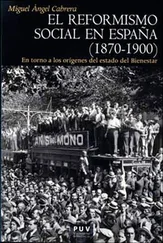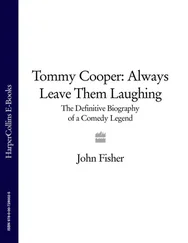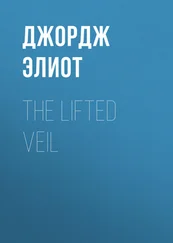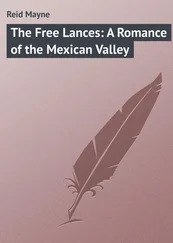In any case, recently, both the criticism and the literature have shown that those categories are neither incompatible nor absolute, and several attempts have been made to testify that borders can merge and be crossed. Paradoxically maybe, the Mormon literary canon proves incomplete if the two are not combined. If we look back on the history of Mormon literary criticism, we can find several examples from several scholars who could not properly find a definition for Mormon literature without dividing it. In 1982, for instance, Eugene England differentiated between “Home Literature”—the highly didactic literature promoted by Whitney’s famous speech—and the literature written by the so-called “Lost Generation” that generated in reaction to the other literature. In fact, it was Edward Geary, who in 1978 separated literature created out of dogma from that created from experience, who coined the term “Lost Generation.” Four years earlier, Karl Keller classified Mormon writing as either orthodox or “jack-fiction”: a term that derives from the concept of a “jack-mormon”—denoting Mormons who are neither committed to the theology nor enthusiastic about the activities of the Church. Even half a century ago, Don D. Walker talked about “outsiders” and “insiders” in reference to the beliefs and the moral values on which the writer relies (Bennion, Popular 159-160). England follows this pattern to state that: “Mormon literary history can, in fact, be imagined as a continual struggle between the two concepts of chosen in literature that encourage one kind of writing at the expense of the other” (England, Good 76).
In 1990, one year after Signature Books published Harvest: Contemporary Mormon Poems , Richard Cracroft—a member of Brigham Young University’s English Department and a Mormon literature critic and reviewer 17—published a review of the text. In that article, Cracroft manifested his profound disagreement with some of the poems selected in the collection, especially with those that belonged to writers born after 1939. These poems were criticized by Cracroft not because of their skillfulness but because of their “lack of Mormonness.” Cracroft complained that the poems written by these authors were grounded in a current and fashionable humanistic and secular culture, at the cost of the Mormon “spirituality” and “transcendence” (Cracroft, Review 1) that should be the main constituent of any true Mormon poem.
Cracroft’s article led to great controversy, and no later than a year after the publishing of his article, Bruce W. Jorgensen—also a member of Brigham Young University’s English Department—wrote a reply to this review. In his reply, Jorgensen expressed his disagreement with the “essentialized readings” that Cracroft suggested, declaring that there is no use in applying terms such as “virtue” or “spirituality” (Jorgensen, To 63) to decide whether a poem is Mormon or not. Jorgensen proclaimed that the fundamental problem with Cracroft’s point of view was the essentialism that he had proposed as a criterion from which to judge literature, while Jorgensen himself advocated hospitable acceptance of these different perspectives and voices.
The significance of this debate lies in the fundamental questions that it raises about the nature and duty of Mormon literature and criticism. Cracroft advocated what he later called a “mantic” literature; a literature that embraces a concept of the world based on religious beliefs, and stood against what he called the “sophic” literature that attempts to define the universe through realistic and scientific modes of interpretation. On the other side, as England quoted in his recollection of this debate, Jorgensen affirmed “the superiority of a literature that opens up to the sacredness of all people and their experience, capturing differences rather than being focused solely in Mormon essences” (England, Good 76). John Bennion tried to reconcile these extremes through his vindication of both “popular” and “faithful” fiction ( Popular 159-182).
This debate was lucrative for Mormon letters as it motivated many scholars to collaborate in reaching a better definition of Mormon writing. The best example with which to illustrate that the Mormon criticism is still—in spite of the considerable amount of work done in the second half of the 20 thcentury—in its beginning stages is the fact that the general project to define the Mormon canon continues. The division between those who champion for a Mormon literature that deals mostly with Mormon themes written for a Mormon readership, and those who encourage a literature that incorporates disruptive topics, still exists in Mormon culture.
In a way, literary criticism only reflects the inner nature of any specific body of literature. Books keep being written and published whether they fit into one category or another, but it seems that, in every body of literature, there remains a primitive temptation to find its ultimate definition. Features, content, form, style, voices, ideologies and ethics can be addressed in order to define any literary group, even if this is gathered in relation to geographical concomitances, the language being used, or the faith that the writers share. Indeed, this bent echoes human impulses towards definition and coherence, and it resembles our own paradoxical existence, since our virtues reveal our flaws. We tend to search for cohesiveness and denotation and we end the search by discovering our chaotic, complex and multiple nature. We invent categories as though we were working on a shoe cabinet for our penny loafers. Then, when everybody is wearing space boots and they no longer fit in our cabinet, we find that we are lost.
The debate about whether Mormon literature ought to be didactic or not reaches to the very core of its nature. Barber herself—reflecting upon Nadine Gordimer’s words about political issues—concludes that “the differentiation seems to be promotion vs. exploration” ( Writing xviii). Apparently, every Mormon writer has to pay a toll before achieving a work of art. Some might see this as an uplifting challenge, others as a hindrance, but it seems unavoidable that the tension between religion and literature is encountered when the two are dealt with at the same time. William Morris states that “Mormon culture is based on LDS theology, membership, and history, but encompasses a broader range of attitudes and practices that can be engaged in no matter what one’s actual standing in relation to the Church is” (2). Based on this idea, Morris reaches the conclusion, already quoted above, that “the Mormon community remains divided and ambivalent” (15).
In order to define any body of literature, a concern with content and form must be present. Brian Evenson states that “Mormon writing has less to do with making statements about Mormonism than it does with having something integrally Mormon about it” (Bigelow 34) and he mentions language among the elements that can determine the mormonness of a text. Jana Riess, publisher and editor, encounters this division in the market: “LDS commercial fiction and ‘Mormon literature’ are not necessarily the same thing. So, the next step will be to develop more of the latter, to tell stories that are darker and deeper” (Bigelow 141). Riess advocates the erosion of the line that divides writing that is “self-consciously literary and the writing that is done to sell books” (Bigelow 142). In this connection, she predicts that, in the future, Mormon culture will see “the emergence of more independent voices” (Bigelow 143), meaning by independent not that they express some kind of criticism of the official Church but that they “connect the Mormon experience—which has been all too insular—to the wider world” (Bigelow 143).
Читать дальше












